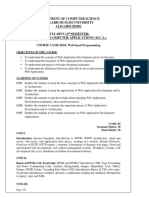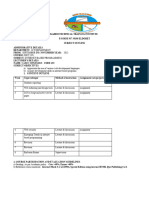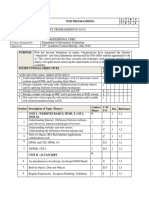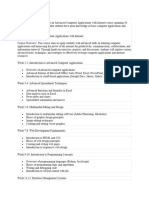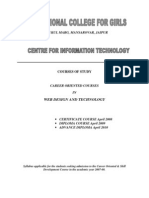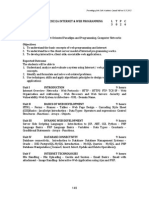0% found this document useful (0 votes)
47 views10 pagesUniversity of Dar Es Salaam
This document provides information about the IS383 Internet Application and Programming course at the University of Dar Es Salaam College of ICT. It introduces the instructor, Joseph Mushi, and lists objectives of enabling students to use, design, and implement their own internet applications. The document outlines topics that will be covered in lectures and practical sessions, including HTML, CSS, PHP, and JavaScript. Assessment will consist of coursework and a final exam.
Uploaded by
ramaj93Copyright
© © All Rights Reserved
We take content rights seriously. If you suspect this is your content, claim it here.
Available Formats
Download as PDF, TXT or read online on Scribd
0% found this document useful (0 votes)
47 views10 pagesUniversity of Dar Es Salaam
This document provides information about the IS383 Internet Application and Programming course at the University of Dar Es Salaam College of ICT. It introduces the instructor, Joseph Mushi, and lists objectives of enabling students to use, design, and implement their own internet applications. The document outlines topics that will be covered in lectures and practical sessions, including HTML, CSS, PHP, and JavaScript. Assessment will consist of coursework and a final exam.
Uploaded by
ramaj93Copyright
© © All Rights Reserved
We take content rights seriously. If you suspect this is your content, claim it here.
Available Formats
Download as PDF, TXT or read online on Scribd
/ 10



